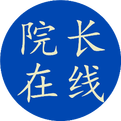The spleen and stomach are the foundation of postnatal life and should not be harmed. Once damaged, recovery can be slow and difficult. Here are some methods for daily spleen and stomach care for your reference.
Methods
1. Rub the Dai Mai (Belt Vessel).
The spleen governs transportation and transformation; if the spleen and stomach are weak, they will be ineffective in this role, leading to stagnation of dampness in the body. Rubbing the Dai Mai not only strengthens the spleen Yang but also invigorates the Yang Qi of the gallbladder meridian on both sides of the abdomen, quickly dispersing the accumulated dampness in the lower abdomen.
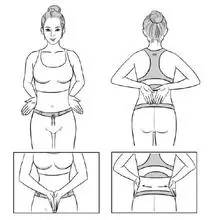
If you feel that rubbing the Dai Mai is not strong enough, you can also use a fist to tap it. This method is also very effective for treating constipation and can yield immediate results!
2. Climb Mountains.
As stated in the “Huangdi Neijing” (Yellow Emperor’s Inner Canon), “The Qi of grains connects to the spleen.” Please note that in traditional Chinese characters, the character for valley (谷) is different from that for grain (毂), and they should not be confused! The Tang dynasty physician Wang Bing explained this as “the valley is empty, and the spleen receives and absorbs.”

In modern terms, climbing mountains not only exercises the muscles and bones, causing one to sweat profusely—this is also a good method for expelling internal dampness—but it also allows the spleen to connect with the Qi of heaven and earth, as well as the Qi of the valleys. This reflects the profound philosophy of our ancient ancestors, encapsulating the idea of harmony between humanity and nature in Chinese culture!
3. Toe Raises.
This involves standing on your toes with your heels raised as high as possible. The stomach meridian passes through the second and third toes, and the source point of the stomach meridian is located at the joints of the toes. For those with weak gastrointestinal function, it is advisable to regularly exercise the toes.
You can walk on your toes or try standing on your toes for about ten minutes. Remember to raise your toes as high as possible for better results!
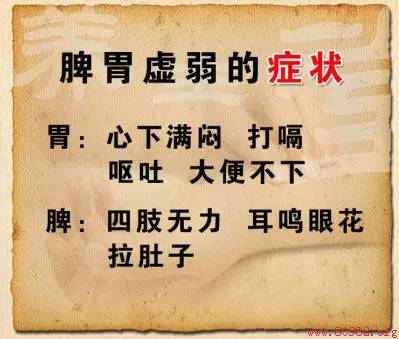
4. Abdominal Pushing Method.
Most chronic diseases can be addressed through this method. The three types of impurities in the body (waste water, waste gas, and feces) can be expelled through this method, and these impurities are the main culprits behind illness.
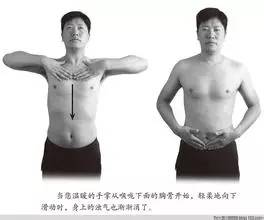
Thus, the ancients often said, “The great way is extremely simple.” Once the principle is understood, solving the problem becomes easier. There are countless methods to solve problems, but that pertains to the realm of “techniques”!
5. Kneeling Method.
This method can guide Qi and blood downward, allowing them to flow into the stomach meridian. Therefore, it greatly benefits the function of the stomach. Of course, the benefits of this practice extend beyond this point, but I won’t elaborate here; if you persist in practicing for a while, you will understand.
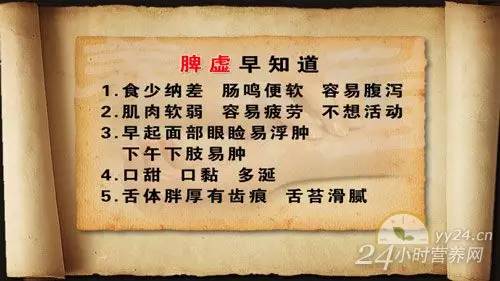
6. Spinal Pinching Method.
In simple terms, this involves pinching along the spine from the tailbone to the neck. When pinching, there is no need to be overly concerned with acupoints, as the sides of the spine correspond to the Du Mai (Governing Vessel) and the Bladder Meridian of the Taiyang (Greater Yang). Pinching the spine can provide comprehensive health benefits; it can strengthen the spleen and stomach, regulate Qi throughout the body, and help to open and close the flow of Qi.
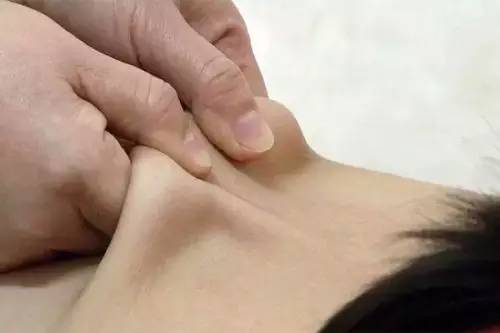
I personally prefer not to follow strict rules; after giving my daughter a spinal pinch for a while, I found that rubbing her spine and its sides was more convenient and quicker, adjusting the pressure as needed until she felt warm.
So I remind everyone that in all matters, there are no fixed methods. Whether it is health preservation or work, one should first understand the “principle” and then seek the “technique”. There is no need to be overly rigid!
7. Saliva Swallowing Health Method.
Saliva is actually the best medicine for strengthening the spleen and stomach. Traditional Chinese medicine believes that saliva can “moisten the five organs, beautify the skin, strengthen teeth, enhance muscles and bones, promote Qi and blood circulation, and prolong life.” Laozi from the Spring and Autumn period believed that while elixirs are good, one’s own saliva is even more important. Ancient health preservation expert Tao Hongjing also said, “Those who consume the jade spring can prolong life and eliminate hundreds of diseases.”
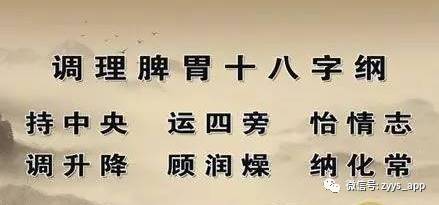
8. Stretching Muscles.
The liver, spleen, and kidney meridians all pass through the thighs, so stretching these muscles is very effective for regulating these three meridians. Personally, I feel that the best method is to stretch while lying down, as it yields more significant results!
Dietary Adjustments
1. Astragalus and Reishi Mushroom Stewed Pork
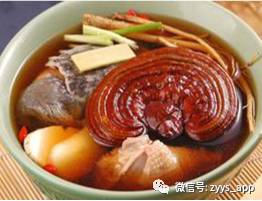
15 grams of Astragalus (Huang Qi), 9 grams of Reishi Mushroom (Ling Zhi), 100 grams of lean pork; combine the above ingredients in a pot, add an appropriate amount of water, and cook into a soup. Strain, season, and consume the soup and meat; take once daily for 10-15 days and observe the effects.
2. Rock Sugar Lotus Seed Porridge
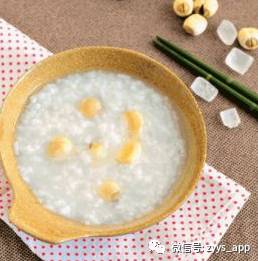
Lotus seeds (remove green core), coix seeds, and glutinous rice in appropriate amounts, with a small amount of walnuts and black sesame; cook the lotus seeds (after removing the green core), coix seeds, and glutinous rice into porridge; when cooked, stir in a small amount of walnut kernels and black sesame, then simmer for another 3-5 minutes before adding rock sugar to complete; take once daily for 10-15 days and observe the effects.
Three Treasures for Strengthening the Spleen
1. Yam (Shan Yao): Sweet, neutral, non-toxic. It enters the spleen, lung, and kidney meridians. According to the “Compendium of Materia Medica,” it has the effects of tonifying the middle, benefiting Qi, and strengthening the spleen. It also aids digestion, stops spontaneous sweating, and alleviates diarrhea, treating conditions such as spleen deficiency diarrhea, lung deficiency cough, diabetes, frequent urination, nocturnal emissions, women’s leukorrhea, and chronic enteritis with poor digestion. When combined with Reishi Mushroom, it can prevent and treat diabetes.
2. Lotus Seed (Lian Zi): Sweet, astringent, neutral. It enters the spleen, kidney, and heart meridians. Its effects include tonifying the spleen, stopping diarrhea, controlling leukorrhea, benefiting the kidney, astringing essence, and calming the heart and mind. It is used for spleen deficiency diarrhea, leukorrhea, nocturnal emissions, palpitations, and insomnia.
3. Coix Seed (Yi Yi Ren): Sweet, astringent, neutral. It enters the spleen and kidney meridians. Its effects include benefiting the kidney, astringing essence, tonifying the spleen, stopping diarrhea, and eliminating dampness. It is used for nocturnal emissions, frequent urination, spleen deficiency diarrhea, leukorrhea, and has similar effects to yam, but yam has more yin properties, while coix seed is more astringent; yam also tonifies lung yin, while coix seed is limited to the spleen and kidney.
Acupuncture and Moxibustion1. Moxibustion on the Umbilicus:
The umbilicus, also known as Shenque (Spirit Gate) point, is where the umbilical cord connects. It is a key point on the Ren Mai (Conception Vessel). The fetus relies on the umbilical cord for nutrition in the womb, similar to how a stem connects to a fruit, serving as the sole pathway for nutrient absorption. We can also understand it as a crucial point connecting the innate and acquired aspects of the human body.
The term Shenque refers to the place where the original spirit enters and resides, holding a very important position. In fact, the Shenque point is also the gateway for the heart and kidney to communicate; the heart houses the spirit, and the kidney stores will, both of which are vital aspects of the five organs.
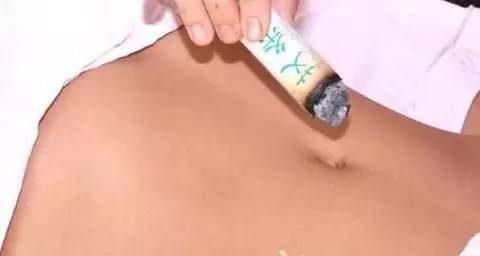
The heart belongs to fire, and the kidney belongs to water; if water and fire cannot communicate and harmonize, it will lead to an imbalance of Yin and Yang, resulting in various diseases.
The Shenque point on the umbilicus is the core of the abdomen, and it has excellent regulating effects on abdominal diseases, such as early morning diarrhea, chronic diarrhea, and post-urinary retention.
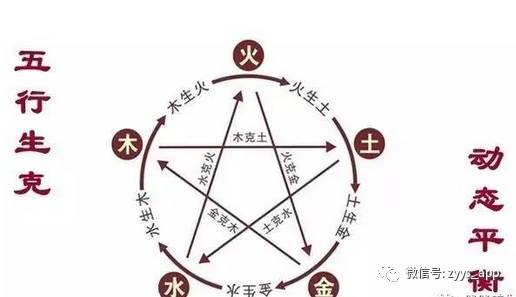
Modern individuals often suffer from spleen and stomach deficiency, mostly due to spleen Yang deficiency. Moxibustion is one of the best methods to raise Yang, so moxibustion on the Shenque can help regulate spleen Yang deficiency.
Directly moxibustion on the umbilicus (Shenque point) involves using three or five-year-old moxa to moxibustion directly above the umbilicus.
During leisure time or while bored on a bus, try pressing the Shenque point with your finger; the effect may not be as good as moxibustion, but with long-term persistence, it will also yield good results.
2. Moxibustion on Zusanli (ST36):
Zusanli is a major point on the stomach meridian; moxibustion for ten minutes daily will surely promote longevity.
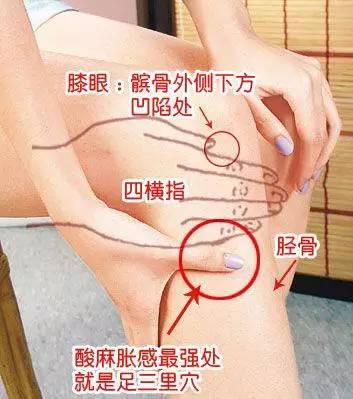
If you don’t believe me, I bet you a dollar. Of course, acupuncture can also be used instead of moxibustion. The saying “Needle must be at Sanli, moxibustion must be at Guanyuan” refers to this.
Acupoints
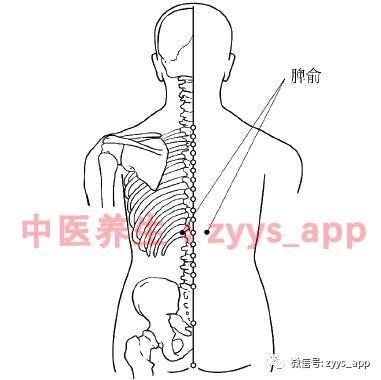
Clinically, it has been found that nearly 90% of eczema patients have spleen deficiency. Traditional Chinese medicine believes that tonifying spleen deficiency is most effective when stimulating the Pishu (Spleen Shu) point. The Pishu point is where the spleen’s essence Qi is transmitted to the back, directly connected to the spleen, so stimulating the Pishu can quickly restore spleen function. The best way to stimulate the Pishu point is through cupping, followed by moxibustion. In early spring and late autumn, cupping is suitable; around 8 PM every evening, cup on both sides of the Pishu point for 15 minutes, and after removing the cups, drink a small cup of warm water.
⊙ Note: The content of this article is for the popularization of TCM knowledge and is not intended as a prescription. Please consult a physician for guidance if needed.
Submission email: [email protected] (Original submissions are welcome)


Strengthening the stomach, insufficient Qi and blood, hypertension, gray hair, allergies, foot baths, hair loss, coix, anemia (blood tonification), pharyngitis, nourishing the stomach, spleen deficiency, bathing, oral ulcers, bad breath, cold uterus, effects of coix porridge, regulating spleen and stomach, colds, cough, hiccups, insomnia, fear of cold, cold hands and feet, back pain, sore throat, eliminating dampness, tonifying the kidney, height and weight chart, dietary pairing taboos, sleeping naked, finger massage, acne, cervical spondylosis, cardiovascular diseases, removing spots, blood tonification, slimming legs, safe period, breast self-examination, body cold, dysmenorrhea, weight loss, sexual health issues, endocrine issues, gynecological issues, health tests, constitution tests, standard three measurements test (bust, waist, hips), body mass index self-test, standard weight
Diagnosis: Hand diagnosis, tongue diagnosis, observation diagnosis, kidney Yang deficiency, kidney Yin deficiency,
Acupoints: Shenshu point, Jingming point, eye acupoint map, eye acupoints, Zusanli point, Yunmen point, Jiexi point, Tianzhu point, Taiyuan point, Guanyuan point, Yongquan point,

